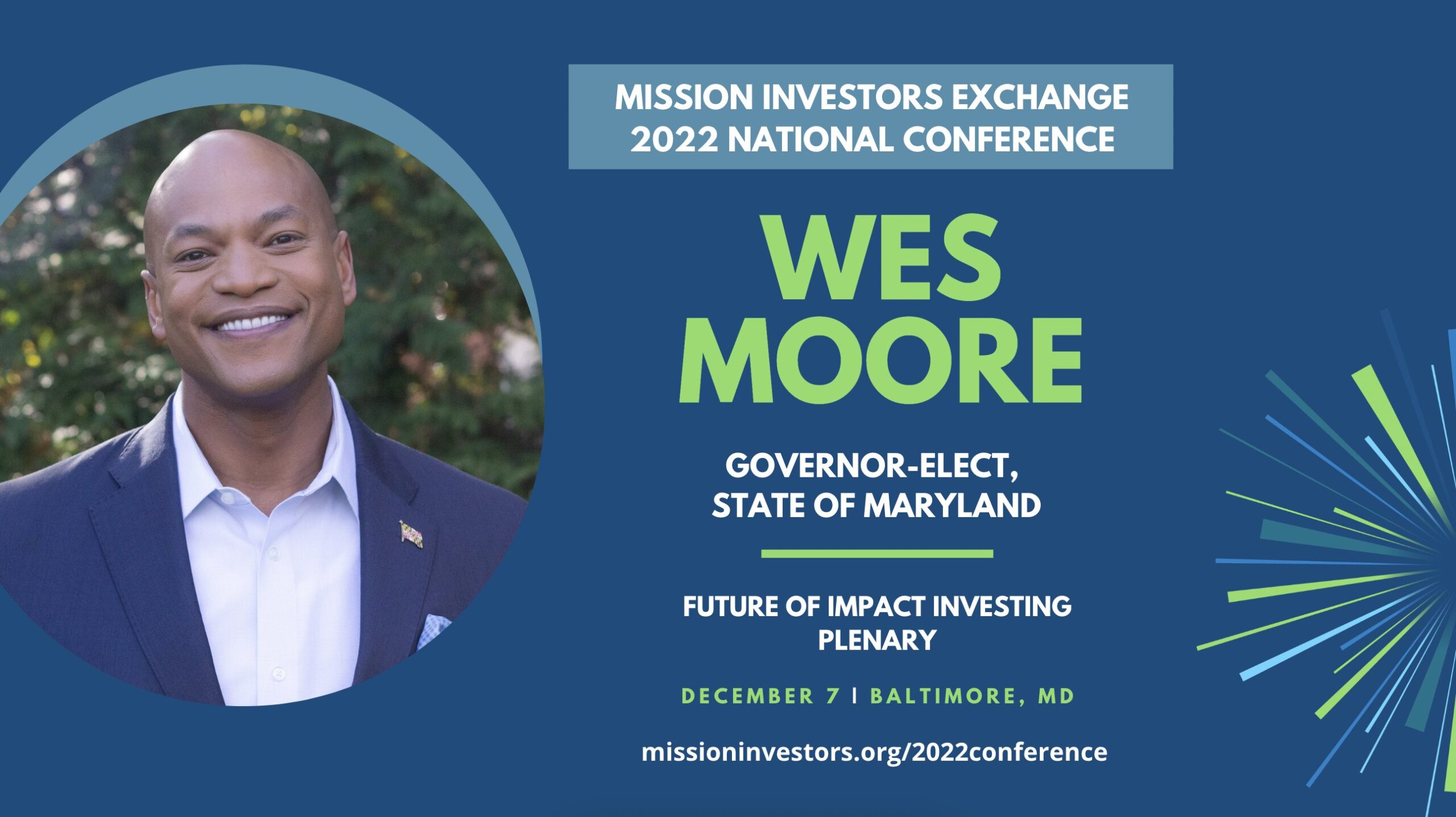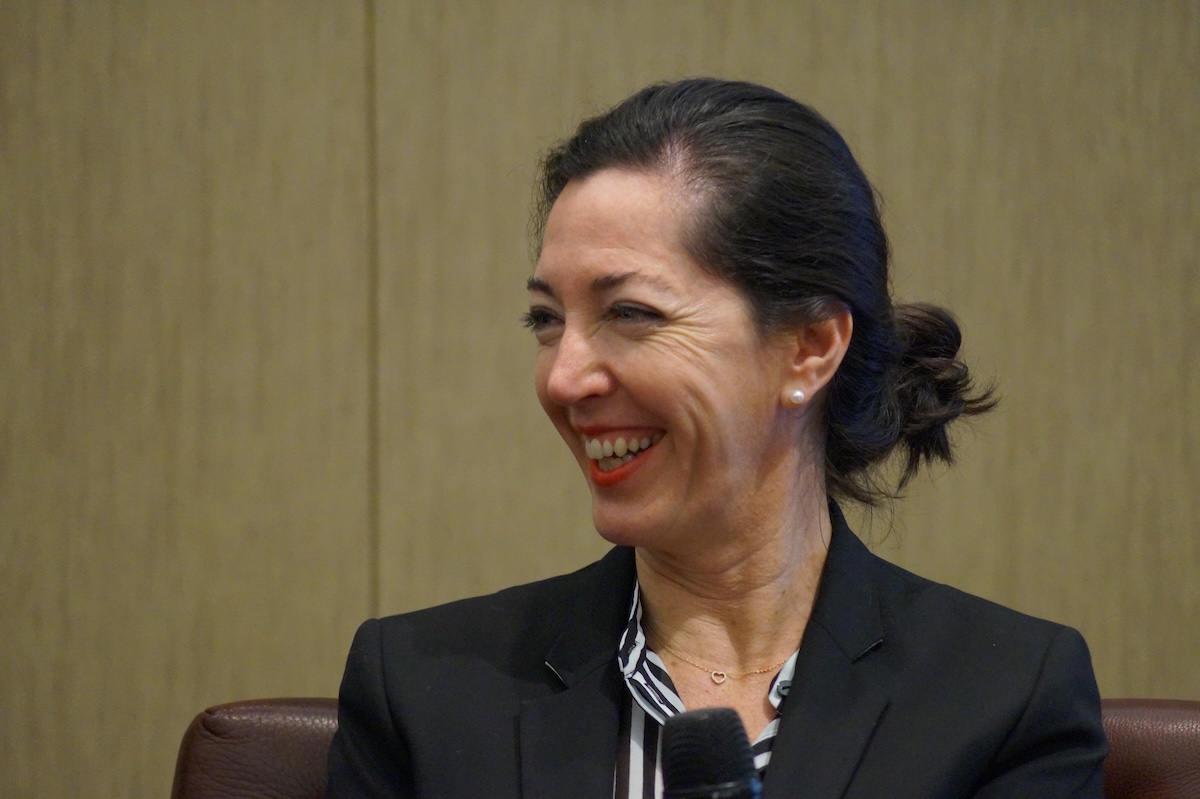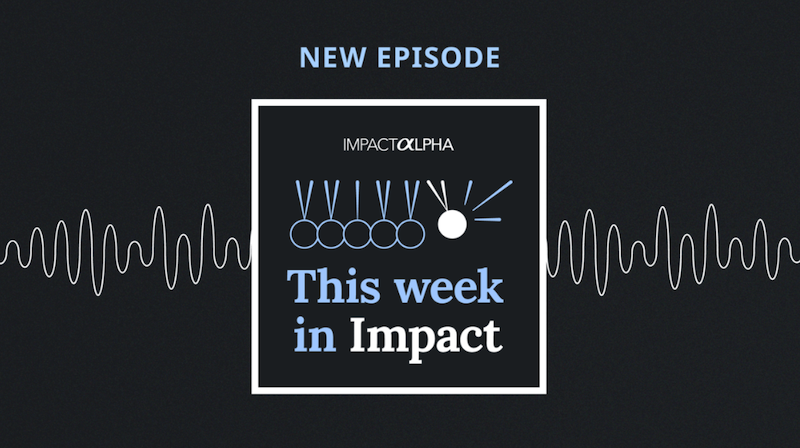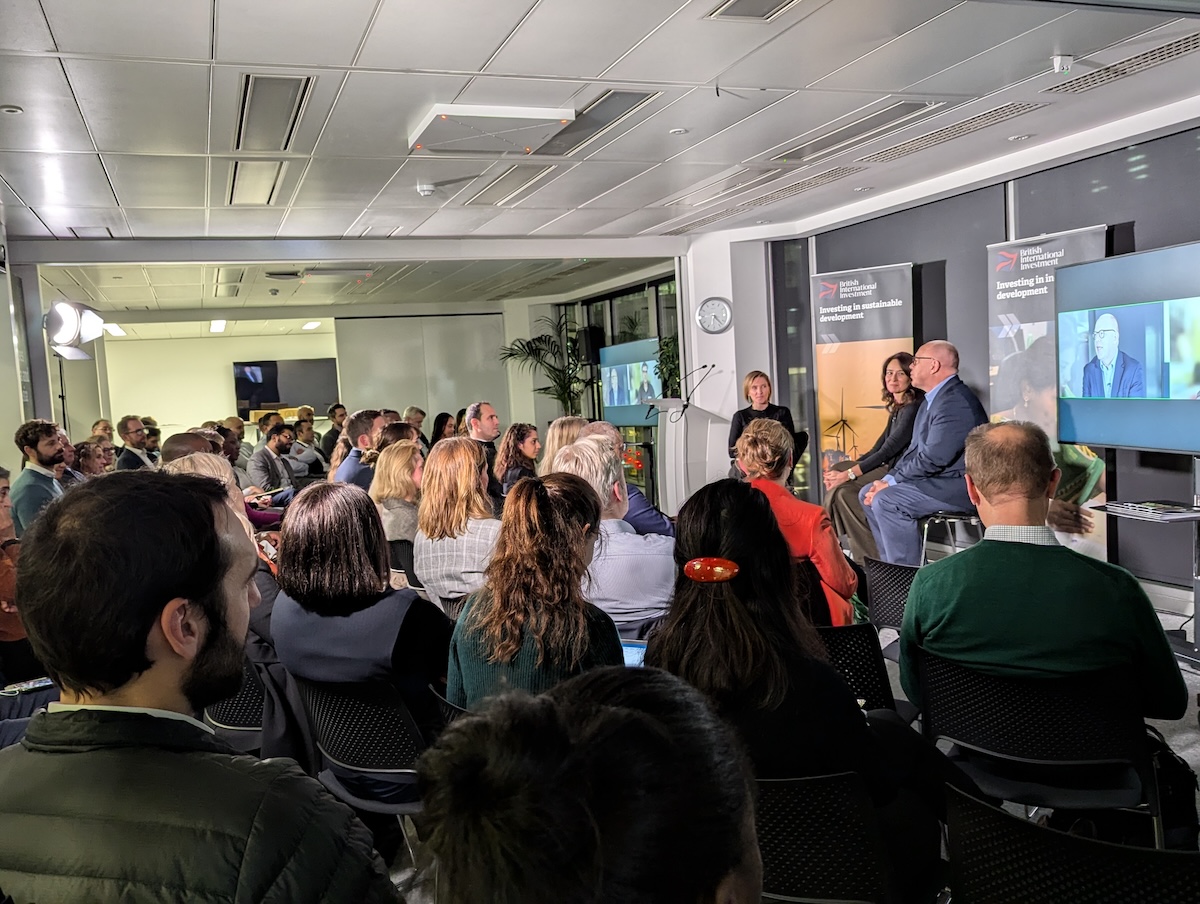Editor’s note: ImpactAlpha is the media partner for the 2022 Mission Investors Exchange conference. Catch up on our series, including:
- “Real estate developers in Baltimore test strategies for inclusive growth and community wealth”
- “How the MacArthur Foundation is leveraging the ‘full continuum’ of capital to address the climate crisis“
- “How The California Endowment is investing for health and racial equity.”
ImpactAlpha, Dec. 8 – When Wes Moore last addressed the Mission Investors Exchange conference in 2016, he was an anti-poverty advocate, author and founder of BridgeEdU, a social enterprise to help at-risk students overcome structural barriers to entering and staying in college (and was acquired by Edquity in 2019).
He returned this week as Maryland’s governor-elect.
In between, in six years as head of the New York-based Robin Hood Foundation (not to be confused with the stock-trading platform), Moore said he had insisted on a policy focus.
“If you don’t address the policies, we will just repeatedly find ourselves cleaning up the debris,” he said in the conference’s final plenary.
After working with an earlier governor to expand child tax credits, however, he was disappointed when the governor made no mention of the issue in his State of the State speech. His colleague told him, “We’ve worked for six months to get a line in the speech. What if you could write the whole speech?” That spurred him to run for public office. He won last month by nearly 2:1 over his Republican opponent.
Moore was a Rhodes scholar, a White House Fellow, and and an Army officer. He is the author of “The Other Wes Moore,” about another Baltimore resident with a similar name whose life turned out very differently.
As governor, Moore says he will put reducing the racial wealth gap at the top of his agenda. He promised Maryland will be the first state to offer the option of a year of public service for every high school graduate. He pledged to be an active partner for impact investors who want to tackle urban and environmental challenges and test solutions.
“And when we see things that essentially you all help to de-risk, we’re coming in,” he said. “I want this to be the place where capital – public and private and philanthropic capital – is coming because this can be the test case, this can be the template.”
“I need you to invest in here. And my promise to you is this: It’ll be the best investment you can make.”
‘Stay proximate to the point of injustice’
Before Frederick Douglass, the slavery abolition movement in the U.S. was dominated by white voices. Douglass was the “first-ever real slave who spoke out as an abolitionist,” recalled Robert Ross of the California Endowment.
The lesson for impact investors: “Stay proximate to the point of injustice,” said Ross, quoting Bryan Stevenson from Equal Justice Initiative (read Ross’s guest post in our series with MIE, “How The California Endowment is investing for health and racial equity.”)
“If you’re trying to impact the community and you’re not working directly with the people that are impacted by the challenges, sorry, but you’re probably not doing impact investing,” added Nick Tilsen of Indigenous-centered NDN Collective.
Self-determination
Tilsen, a member of the Oglala Lakota Nation, started NDN Collective to mobilize capital and resources to Indigenous-led and -centered organizations. Less than 0.5% of philanthropic funding goes to Indigenous communities.
NDN has facilitated $200 million in grants and investments to tribal businesses and projects. It operates its own community development financial institution, and it’s making financing more accessible by doing away with credit scoring.
He called on investors to do more to support and empower Indigenous communities to be stewards of their land, where “80% of the world’s biodiversity exists.”
Added Tilsen, “We’re actually leading in solving some of these problems without the investment. Imagine if the investment existed.”
Wealth creation
Plenty of models exist for helping underserved and historically marginalized individuals communities build wealth: ESOPs, worker-ownership trusts, cooperatives, neighborhood trusts. Many individuals and communities are reluctant to participate because of a lack of information about how these models work and the benefits.
“You have to educate the folks that you’re looking to serve,” said John Holdsclaw IV of Rochdale Capital (see, “Agent of Impact: John Holdsclaw IV“). “We’ve got to do a better job in the under-resourced communities that we serve, to teach them that there will be a lot of meetings. But you will own your home. You will own your business.”
Foundation leaders take aim at their own investment committees
Foundation presidents may have the titles, but their investment committees hold the purse strings, and often pose obstacles to aligning philanthropic endowments with philanthropic missions.
“You just mentioned two words that are the elephant in the room: investment committee,” Ford Foundation’s Darren Walker said to Shanaysha Sauls of the Baltimore Community Foundation at the opening plenary of this week’s Mission Investors Exchange conference.
Walker recounted the “legalese” invoked by investment committee members at both the Rockefeller Foundation and at Ford, “that they interpreted as not allowing some of the very practices that are needed to achieve real equity and real impact” (for background, see, “Darren Walker takes on opponents of impact investing – including his own trustees”).
ImpactAlpha’s David Bank and Jessica Pothering report from Baltimore:
Term limits
California Wellness Foundation’s Judy Belk said she met with the head of her investment committee soon after she became CEO in 2014. “I noticed in your interview you talked about mission-related investing,” she said he told her. “I’m totally opposed to it.”
She said she went to the chair of her board of trustees, who told her, “The most effective tool that you have in your toolkit is term limits.” Belk said that from an initial $50 million carveout, she has now moved 92% of the foundation’s $1 billion endowment toward mission alignment, with diverse managers for more than 60% of the assets.
At the Baltimore Community Foundation, investment committee chair Patricia Baum of RBC Wealth Management leads the foundation’s impact investing initiative. “Where are they? Who is this prototype?” Walker asked, looking out into the ballroom. “There are a whole lot of investment committee meetings where you need to be in the room.”
Disrupting the status quo
Arkansas-based Winthrop Rockefeller Foundation has moved more than 60% of its $140 million endowment into mission-aligned investing. Grant-making wasn’t doing enough to upend systemic racial inequality, said Sherece West-Scantlebury, who heads the foundation. “We want to fund disruptors and those who want to kick over the table and do things differently.”
West-Scantlebury spotlighted the foundation’s support for community development financial institutions and a Covid-relief loan fund for Black and Brown-owned businesses in Arkansas (see West-Scantlebury’s post, “Investors must make noise so BIPOC entrepreneurs don’t have to make do”).
She said by now there is ample evidence and guidance for foundation’s to adopt mission-related investing. “If you’re not doing this right now—and doing it in earnest—it’s because you don’t want to, not because the data’s not there.”
Racial equity targets
The urgency of addressing racial equity barriers was the topic of a 2014 report from the Annie E. Casey Foundation. “We thought we were doing that report for everyone else and we realized we had to read it ourselves and accept that we have got work to do here,” said Lisa Hamilton, president of the $3.4 billion foundation. “Universal strategies” were not advancing the well-being of kids of color, she said.
Casey now targets racial equity across its operations, including investment decisions and selection of asset managers. “Today more than half of our social investment portfolio–about $50 million–has an explicit racial equity component,” Hamilton said. “Universal strategies don’t get you where you need to go. You’ve got to be intentional and targeted.”












